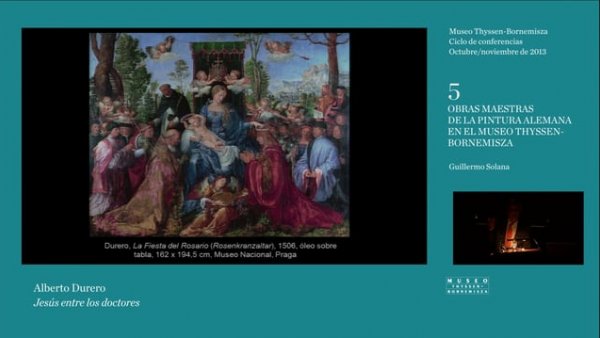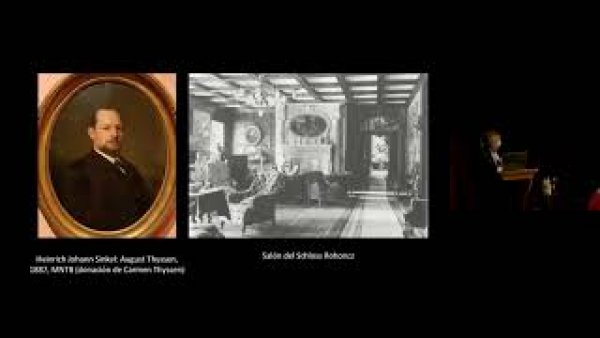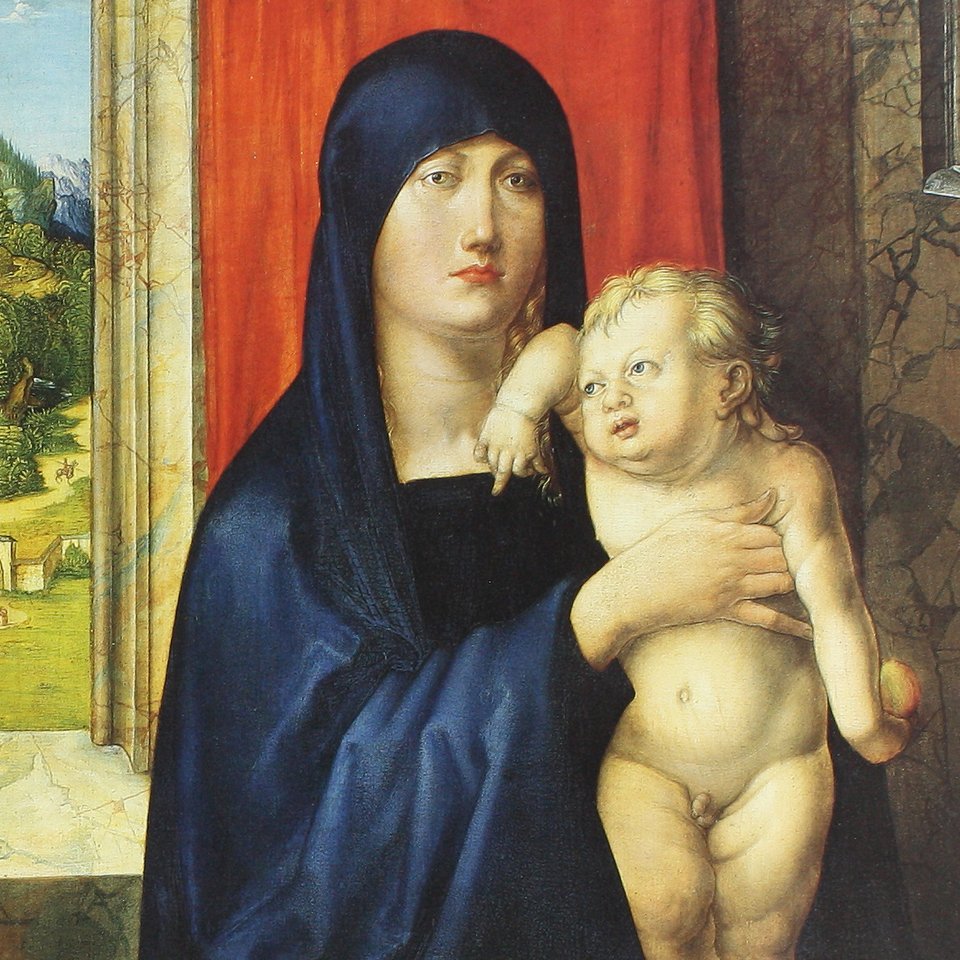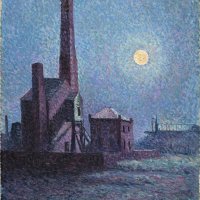Jesus Among the Doctors
Dürer was the leading representative of German Renaissance art, and a key advocate of new ideas in Northern Europe. This panel was executed in Venice, during his second visit to Italy—where he was hailed as a consummate artist—and it has been identified as the painting referred to in a letter from Dürer to his friend Willibald Pirckheimer, the Nuremberg humanist. In its use of half-length figures and the arrangement of heads around a focal point formed by the child’s face and hands, the composition clearly echoes contemporary Italian painting. Thus, the German artist skilfully blends the two Renaissance worlds of Northern Europe and Italy. The panel is dated and signed with Dürer’s anagram on the slip of paper protruding from the book in the foreground.
Dürer was in Venice between the end of the summer of 1505 and the autumn of 1506, at which point he went to Bologna. He had already been in Venice as a young man in 1494 but the second trip was quite different to the first. By 1505 Dürer was a celebrated artist and the city welcomed him as an illustrious visitor. In addition, Venice had a sizeable and well organised German community whose economic and social headquarters was the Fondaco dei Tedeschi and whose religious centre was the church of San Bartolomé. During the months that Dürer spent in Venice he corresponded with one of his oldest friends, the humanist and poet Willibald Pirckheimer (1470–1530) who was among the most important influences on Dürer’s early formation and his career, together with the printer and publisher Anton Koberger (ca. 1445–1513).
In a letter from the artist to Pirckheimer of 23 September 1506 Dürer comments without false modesty on his advances in painting. This letter has been associated with the present oil of Jesus among the Doctors. Dürer comments: “You should know that I have finished the panel and also another painting different to anything I have painted up to now”. The work mentioned first has been identified as The Virgin of the Rose Garlands, now in Prague. Commissioned by the German community in Venice for one of its altars in San Bartolomé, it was exhibited on completion and aroused enormous admiration on the part of leading members of Venetian society. The other work, “different to anything I have painted up to now”, to which Dürer refers in his letter has been identified either as the Madonna of the Greenfinch in the Gemäldegalerie, Berlin, or the present Jesus among the Doctors. Bearing in mind the subject, the technique and the artist’s approach to the depiction of this episode it is, however, more likely to be the present work.
Dürer depicts six rabbis forming a circle in which the central figure is that of the young Christ. The hands of one of the rabbis and those of Christ create the visual focus of the composition due to their position and their highly dynamic and volumetric nature. The half-figures and the location of the heads against an almost non-existent background relate this work to 15th-century Italian painting, but the caricatural distortions of the face of the rabbi with the white cap on the right suggest Leonardo and even Bosch and it could be said that Dürer combined Italian and northern elements in this work with great originality. Beauty and ugliness, youth and old age are contrasted in a striking and unusual manner. The panel is dated and signed on the painted slip of paper in the foreground which also has the Latin phrase “work executed in five days”, the time that Dürer may have taken to produce this composition, not including the preparatory studies for the hands, books and Christ’s face now in the Albertina, Vienna, and the Germanisches Nationalmuseum, Nuremberg and which probably took the artist longer. Two copies of the composition (one of them a drawing in the Thyssen-Bornemisza collection) have the words “Fecit Romae” on this slip of paper. This additional phrase on two faithful copies of the present work has been used to support the controversial suggestion that the Dürer was in Rome at the end of 1506 and the start of 1507, a period in which nothing is known of his activities.
The subject depicted is part of the childhood of Christ, recounted in the New Testament and in the apocryphal Arabic Gospel of the Infancy in which his role as a teacher is emphasised. The details supplied in these sources are scant, although we know that the story took place when Christ was twelve. Having lost their son, the Virgin and Saint Joseph found him after three days of searching. He was in the temple in Jerusalem seated among the doctors, listening to them, questioning them and surprising them with his own replies. In this composition Christ uses the expressive gesture of counting his arguments on his fingers, a common practice in theological disputes.
The panel was in the Barberini collection, in whose inventories it is recorded from 1634. It still has two stamps from that collection on the reverse. In 1934 it was with the Mercuria gallery in Lucerne from where it was acquired that year for the Thyssen-Bornemisza collection.
Mar Borobia
Emotions through art
This artwork is part of a study we conducted to analyze people's emotional responses when observing 125 pieces from the museum.














